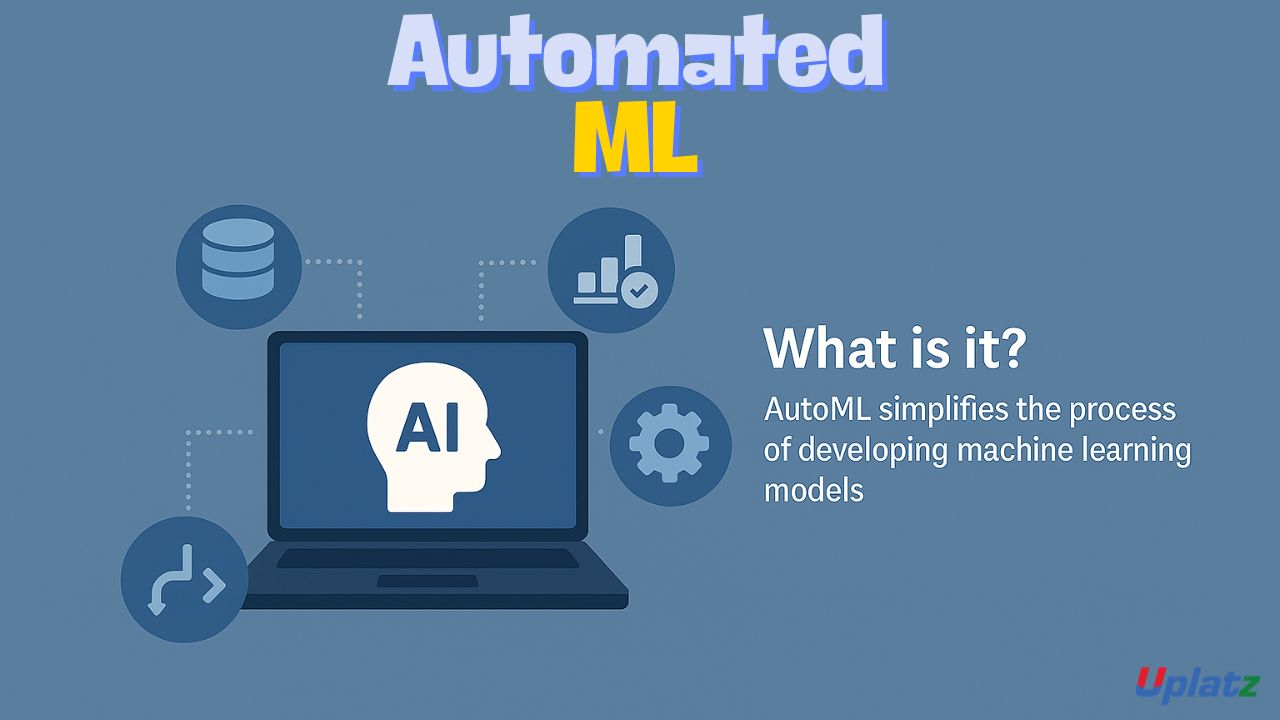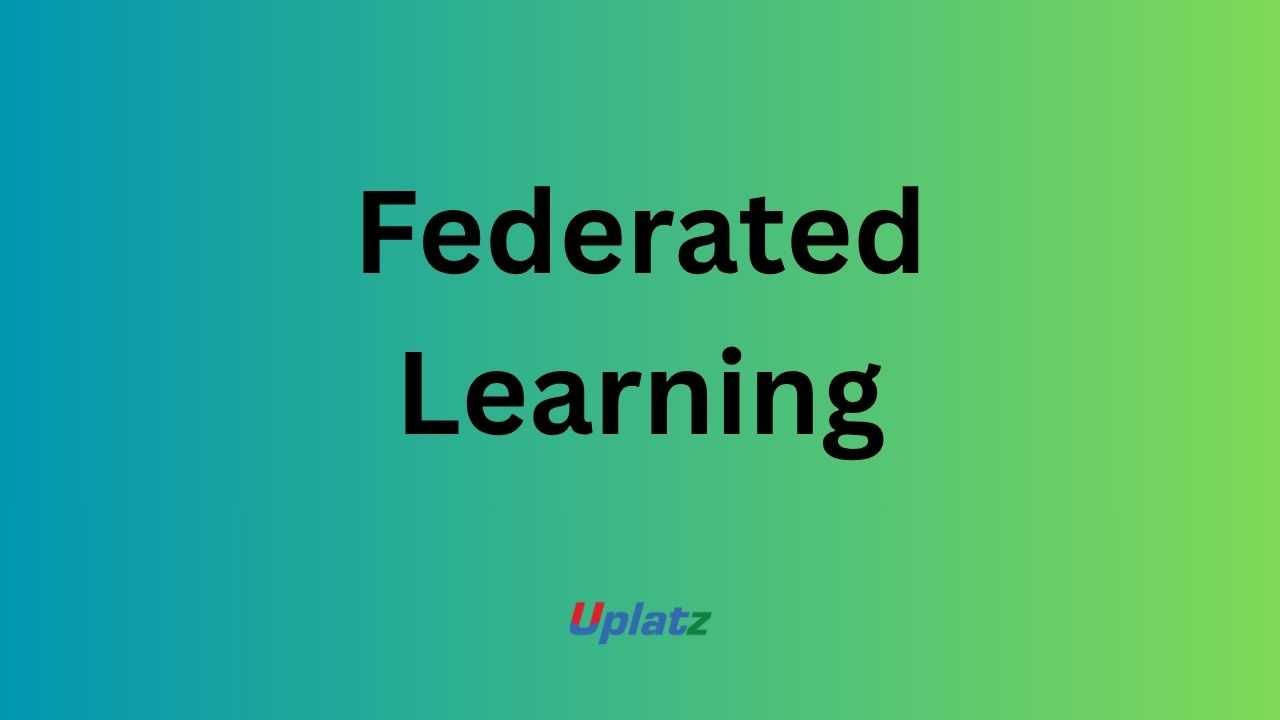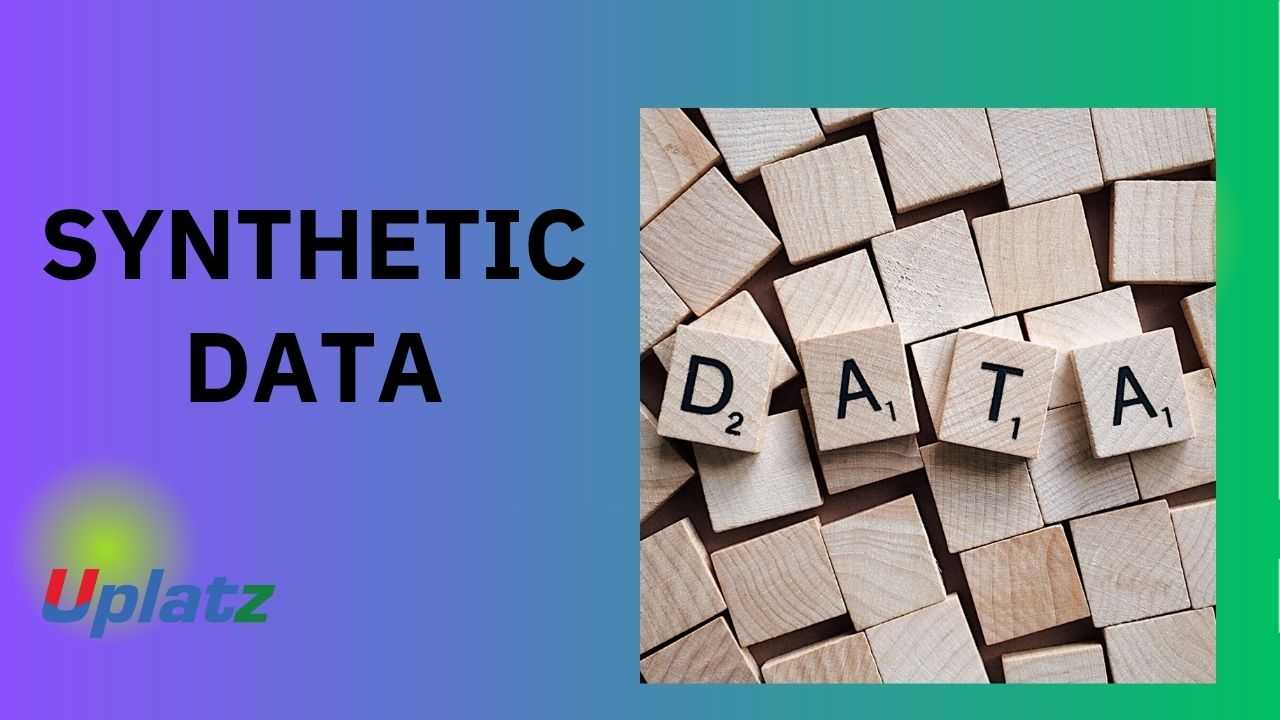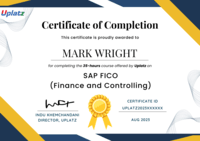Digital Twins and Simulation
Create Real-Time Virtual Replicas of Physical Systems for Intelligent Analysis and Optimization 97% Started a new career
BUY THIS COURSE (
97% Started a new career
BUY THIS COURSE (GBP 12 GBP 29 )-
 86% Got a pay increase and promotion
86% Got a pay increase and promotion
Students also bought -
-

- Automated Machine Learning (AutoML)
- 10 Hours
- GBP 12
- 10 Learners
-

- Federated Learning
- 10 Hours
- GBP 12
- 10 Learners
-

- Synthetic Data: Generation, Applications, and Privacy-Enhanced AI
- 10 Hours
- GBP 12
- 10 Learners

As industries accelerate toward digital transformation and Industry 4.0, the need for intelligent, data-driven systems has become more urgent than ever. One of the most impactful innovations enabling this shift is Digital Twin technology — a powerful approach that creates real-time digital replicas of physical assets, processes, or environments. These virtual models allow organisations to simulate operations, monitor performance, predict failures, and optimise systems long before real-world changes occur.
The Digital Twins and Simulation course by Uplatz offers a complete pathway into this transformative technology. Designed for engineers, data professionals, and innovators across multiple domains, the course blends conceptual understanding with practical applications using industry-leading tools. You will learn how digital twins integrate IoT connectivity, real-time data analytics, AI-powered prediction, and cloud computing to replicate and optimise any physical system — from a factory production line to a smart-city energy network.
Whether you are looking to improve operational efficiency, enhance predictive maintenance, or design complex simulations, this course equips you with the knowledge and practical experience to build next-generation digital twin solutions.
🔍 What Is a Digital Twin?
A Digital Twin is a dynamic, virtual representation of a physical system. It mimics the real-world object’s structure, behaviour, and performance in a digital environment by continuously receiving real-time data from sensors, IoT devices, and external systems.
A digital twin has three essential components:
1. Physical System
The real asset — such as a machine, vehicle, building, or entire industrial process.
2. Digital Replica
A simulation model built using mathematical, physical, or AI-based modelling techniques.
3. Data Connection
A live data pipeline (via cloud, IoT, or APIs) that synchronises the digital replica with the physical world.
This constant flow of information allows organisations to:
-
Test scenarios without risking real assets
-
Predict failures before they occur
-
Optimise operations and reduce downtime
-
Improve decision-making with real-time insights
-
Reduce costs through accurate simulations
Digital twin technology is now a cornerstone of Industry 4.0 initiatives and smart-system architectures.
⚙️ How Digital Twins Work
Digital twin systems integrate multiple technologies to build a complete virtual representation that behaves like its real-world counterpart.
1. Sensors & IoT Connectivity
Physical assets are equipped with sensors that capture temperature, pressure, vibration, location, or energy usage. IoT protocols such as MQTT, OPC UA, and HTTP API streams transmit this data to the cloud.
2. Data Integration & Cloud Platforms
Incoming data is processed and stored in cloud platforms such as:
-
Azure Digital Twins
-
AWS IoT TwinMaker
-
Siemens MindSphere
-
PTC ThingWorx
These systems serve as the central intelligence hub of the digital twin.
3. Simulation Engines
The digital replica is simulated using tools like:
-
MATLAB Simulink
-
Unity & Unreal Engine
-
Ansys Twin Builder
-
Siemens NX or Solid Edge
These simulation engines enable physical modelling, system dynamics, and virtual testing.
4. AI & Predictive Analytics
Machine learning models analyse patterns in the data to:
-
detect anomalies
-
predict component failures
-
estimate remaining useful life (RUL)
-
recommend optimal settings for efficiency
5. Dashboards & Visualization
Digital twins are visualised through:
-
3D dashboards
-
SCADA systems
-
interactive visual interfaces
-
AR/VR environments
Users interact with real-time data and simulation results for decision-making and optimisation.
🏭 Industry Applications of Digital Twins
Digital twin technology is transforming industries around the world. Leading organisations such as Siemens, GE, IBM, Bosch, Honeywell, NVIDIA, Tesla, and Philips rely on digital twins for mission-critical operations.
Key applications include:
Manufacturing & Industry 4.0
-
Predictive maintenance for machinery
-
Real-time production monitoring
-
Simulation of supply chain operations
-
Quality control optimisation
Healthcare & Medical Devices
-
Patient digital twins for personalised treatment
-
Surgical simulation and planning
-
Remote monitoring of medical equipment
Smart Cities & Infrastructure
-
Traffic optimisation
-
Smart-grid energy distribution
-
Building performance modelling
-
City-scale digital twins for planning and emergency response
Transportation & Automotive
-
Autonomous vehicle simulation
-
Fleet monitoring
-
Digital twin of engines and powertrains
Energy & Utilities
-
Oil and gas pipeline monitoring
-
Wind turbine performance optimisation
-
Solar farm digital replicas
-
Predictive failure analysis
Aerospace & Defense
-
Aircraft engine digital twins
-
Spacecraft simulation
-
Mission planning in virtual environments
Digital twins provide unparalleled insights into system behaviour, making them essential for high-efficiency, high-precision operations.
🌟 Benefits of Learning Digital Twins & Simulation
Mastering digital twins gives you several competitive advantages:
-
Future-Ready Skills for Industry 4.0
Organisations need engineers and analysts who can bridge physical and digital systems. -
Improved Operational Efficiency
Learn how to build systems that reduce downtime and enhance productivity. -
Better Predictive Maintenance
Predict failures before they occur using AI-driven insights. -
Cost Savings Through Simulation
Test changes virtually before implementing them in expensive real-world environments. -
Enhanced Decision-Making
Real-time monitoring and simulations improve accuracy in strategic choices. -
Highly Transferable Skills
Knowledge of digital twins applies to manufacturing, healthcare, energy, automotive, smart cities, aerospace, and more. -
Strong Career Prospects
Digital twin engineers, simulation analysts, and IoT architects are in high demand globally.
📘 What You’ll Learn in This Course
Without repeating the syllabus, your learning journey includes:
-
Foundations of system modelling and simulation
-
IoT connectivity and real-time data integration
-
Digital twin architecture from edge to cloud
-
Building simulations in MATLAB/Simulink and Unity
-
Working with Azure Digital Twins, ThingWorx, and Siemens tools
-
Applying AI for predictive maintenance and anomaly detection
-
Real-time dashboards and 3D digital visualisation
-
Designing complete digital twin pipelines
-
Capstone project replicating a factory line or smart-home system
🧠 How to Use This Course Effectively
To get the best learning experience:
-
Start with system dynamics and modelling fundamentals.
-
Understand IoT connectivity and data streaming workflows.
-
Build simulation models using MATLAB, Simulink, or Unity.
-
Work with real-time data from IoT sensors or cloud APIs.
-
Apply AI algorithms for prediction, detection, and optimisation.
-
Visualise data through custom dashboards.
-
Complete the final capstone project to reinforce your skills.
Hands-on practice is essential for mastering digital twin workflows.
👩💻 Who Should Take This Course
This course is perfect for:
-
Engineers (Mechanical, Electrical, Industrial, Systems)
-
IoT Developers
-
AI & ML Practitioners
-
Simulation and Modelling Experts
-
Cloud Architects
-
Smart City & Infrastructure Planners
-
Automation Professionals
-
Students and researchers in Industry 4.0 technologies
Basic knowledge of engineering systems or programming is helpful but not mandatory.
🚀 Final Takeaway
Digital twins are redefining how industries operate, innovate, and optimise performance. The Digital Twins & Simulation course by Uplatz gives you the foundational knowledge and practical experience to build real-world digital replicas that enhance reliability, efficiency, and intelligence across systems.
By the end of the course, you’ll have the confidence to design and deploy digital twins that connect the physical and digital worlds — supporting smarter factories, safer healthcare systems, intelligent cities, and sustainable energy infrastructures.
-
Understand the concept and lifecycle of digital twins.
-
Learn about IoT-enabled data collection and synchronization.
-
Model real-world systems using simulation tools.
-
Implement predictive analytics and machine learning in digital twins.
-
Connect sensors and data streams for real-time insights.
-
Build cloud-based dashboards for monitoring and control.
-
Explore industrial applications in manufacturing and logistics.
-
Use simulation to enhance reliability and reduce downtime.
-
Address security and interoperability in digital-twin networks.
-
Prepare for engineering, AI, and system-integration careers.
Course Syllabus
Module 1: Introduction to Digital Twins and Simulation Concepts
Module 2: System Modelling and Dynamic Simulation
Module 3: IoT and Sensor Integration for Real-Time Data
Module 4: Cloud Platforms – Azure Digital Twins, AWS IoT TwinMaker
Module 5: Simulation Tools – MATLAB, Simulink, and Unity
Module 6: Predictive Maintenance and AI-Driven Analytics
Module 7: Data Visualisation and Digital-Twin Dashboards
Module 8: Security, Standards, and Interoperability (DAML, ISO/IEC)
Module 9: Industry Use Cases – Manufacturing, Energy, Smart Cities
Module 10: Capstone Project – Build a Functional Digital-Twin Prototype
Upon successful completion, learners receive a Certificate of Completion from Uplatz, confirming expertise in Digital Twins and Simulation. This Uplatz certification validates your skills in building, analysing, and maintaining real-time digital replicas of physical systems.
The certification aligns with global trends in Industry 4.0, IoT, and smart-system design, making it ideal for professionals in engineering, automation, and AI-driven analytics.
Holding this credential demonstrates that you can integrate data, simulation, and predictive models to create intelligent systems — enabling data-driven decision-making and sustainable industrial transformation.
Digital Twin Engineers are among the most sought-after professionals in modern industry. Completing this course from Uplatz prepares you for roles such as:
-
Digital Twin Developer
-
Simulation Engineer
-
IoT Systems Architect
-
Predictive Maintenance Analyst
-
Smart Manufacturing Engineer
Professionals in this field typically earn between $100,000 and $185,000 per year, depending on their domain and experience.
Career opportunities span automotive, aerospace, energy, healthcare, and smart-city infrastructure, where real-time monitoring and predictive insights drive operational excellence. This course gives you the ability to design and implement digital twins that transform physical operations into intelligent, adaptive systems.
-
What is a Digital Twin?
A virtual replica of a physical system that uses real-time data to simulate and optimise performance. -
How does simulation support digital twins?
It enables testing, prediction, and validation of system behaviour without disrupting real operations. -
What technologies enable digital twins?
IoT sensors, cloud computing, AI/ML, and simulation software. -
What are key components of a digital-twin architecture?
Data ingestion layer, analytics engine, simulation model, and visualisation interface. -
How are AI and ML used in digital twins?
They predict failures, improve efficiency, and automate decision-making. -
What is predictive maintenance?
Using AI-based analysis of sensor data to forecast equipment failure before it happens. -
What are common tools for building digital twins?
Azure Digital Twins, MATLAB Simulink, PTC ThingWorx, and Siemens NX. -
How does a digital twin differ from a simulation?
A simulation is static; a digital twin is dynamic and updated continuously with live data. -
What industries benefit most from digital twins?
Manufacturing, logistics, energy, healthcare, and infrastructure. -
What are the biggest challenges in implementing digital twins?
Data integration, security, and ensuring real-time synchronization.









